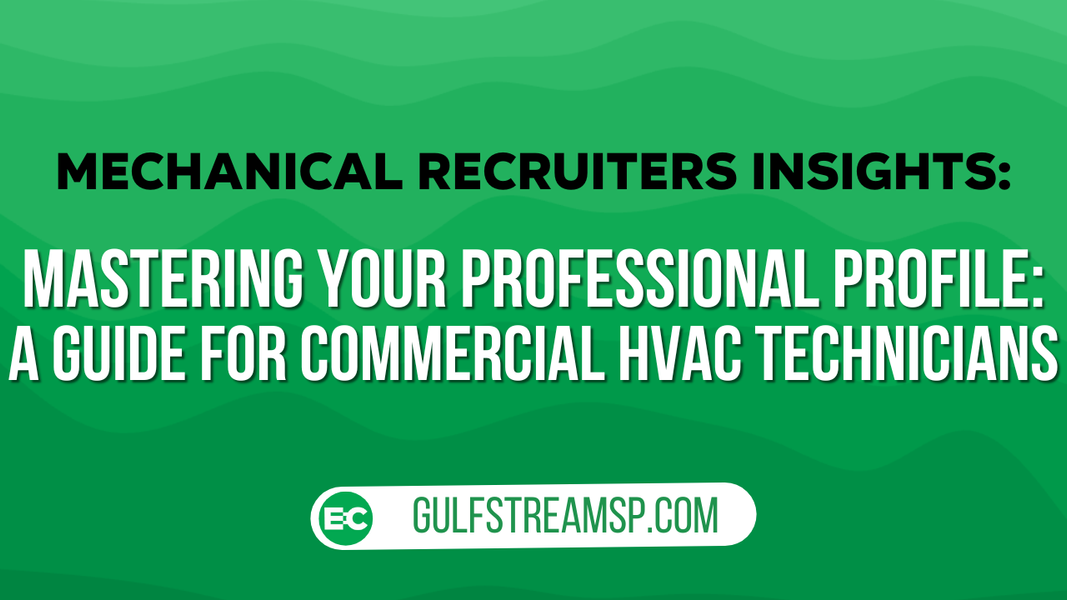Mastering Your Professional Profile: A Guide for Commercial HVAC Technicians
In the ever-evolving world of commercial HVAC systems, your professional profile is more than a static resume – it's your career billboard. A well-crafted profile is crucial for technicians specializing in systems like chillers, boilers, large tonnage Rooftop Units (RTUs), and Variable Refrigerant Flow (VRF) systems. It's not just about listing your experiences; it's about showcasing your expertise in a way that attracts recruiters and hiring managers. Let's dive into how you can effectively highlight your skills and experiences, paving the way for career growth and new opportunities.
Understanding the Professional Profile
In the HVAC industry, your professional profile is your ticket to recognition. A detailed profile does more than list where you've worked; it tells the story of your career journey. It's your chance to shine in a competitive market and stand out to potential employers looking for someone with your specific skill set.
Listing Skills and Experiences
When listing your skills and experiences under each employer, specificity is critical. Don't just say you've worked on HVAC systems; detail the types of equipment - chillers, boilers, etc. - and the capacity of those systems. This level of detail speaks volumes about your expertise and can set you apart from the competition.
Detailing Technical Skills
Your technical skills are your bread and butter. Describe them using industry-specific terminology to demonstrate your knowledge and professionalism. For instance, rather than saying you 'repaired HVAC systems,' specify that you 'performed maintenance and repairs on 500-ton centrifugal chillers.' This not only showcases your experience but also your understanding of the industry's technical aspects.
Updating Profiles for Career Progression
The HVAC industry is constantly evolving, and so should your profile. Regularly updating your skills and experiences shows that you are growing professionally and keeping up with industry trends. This proactive approach can be a significant factor in career advancement.
Examples and Best Practices
Consider profiles that stand out for their clarity and organization. A well-constructed skills section might look like this:
Boilers: Maintenance and troubleshooting of high-efficiency commercial boilers, including XYZ models.
Large Tonnage RTUs: Installation and servicing of RTUs up to 1000 tons, focusing on optimizing energy efficiency.
VRF Systems: In-depth experience with installation and fault diagnosis in various VRF systems, including brand-specific training on ABC systems.
Leveraging Company Resources
Many companies offer training and resources that can significantly enhance your skills. Participate actively in these opportunities and reflect this learning in your profile. For instance, if you've completed a specialized training course on a new type of chiller, ensure this is highlighted in your profile.
Your professional profile is a dynamic and powerful tool in your career arsenal. By clearly showcasing your skills and experiences, particularly in the specialized areas of commercial HVAC systems, you open doors to new opportunities and career growth. Take a moment to review and update your professional profile today. Share your success stories with us and inspire fellow technicians to take control of their professional image. Remember, in the HVAC world, your skills and experiences are your most vital assets. Let them shine!
